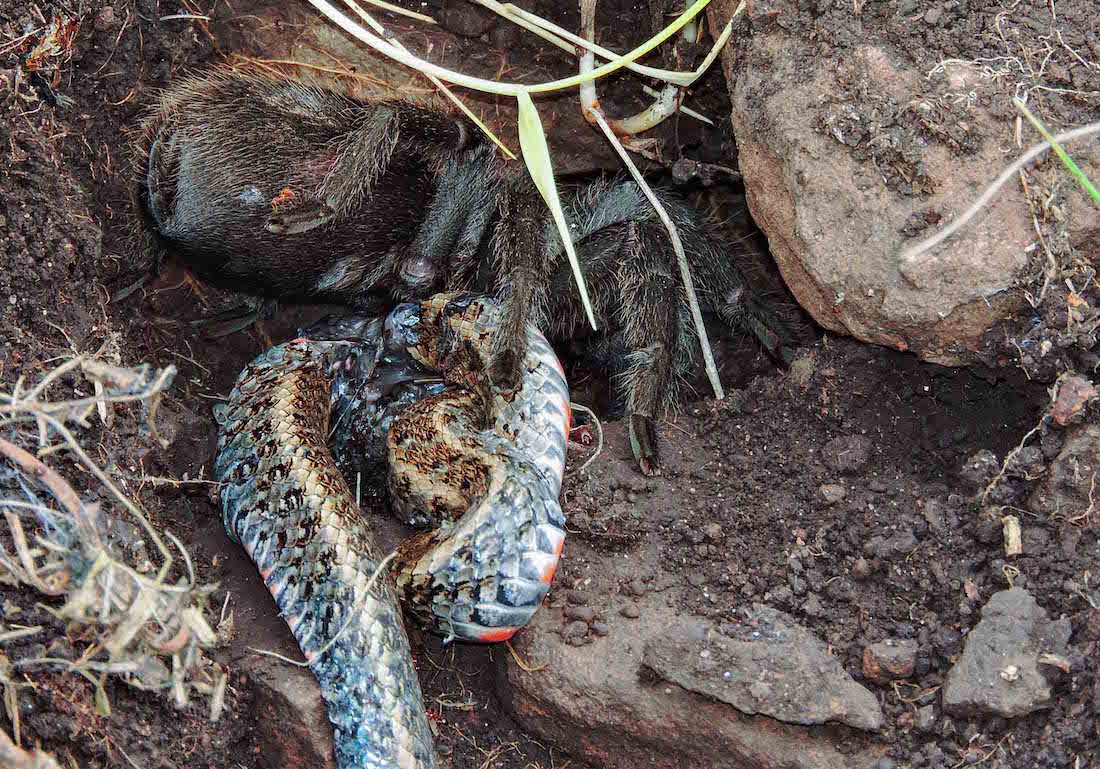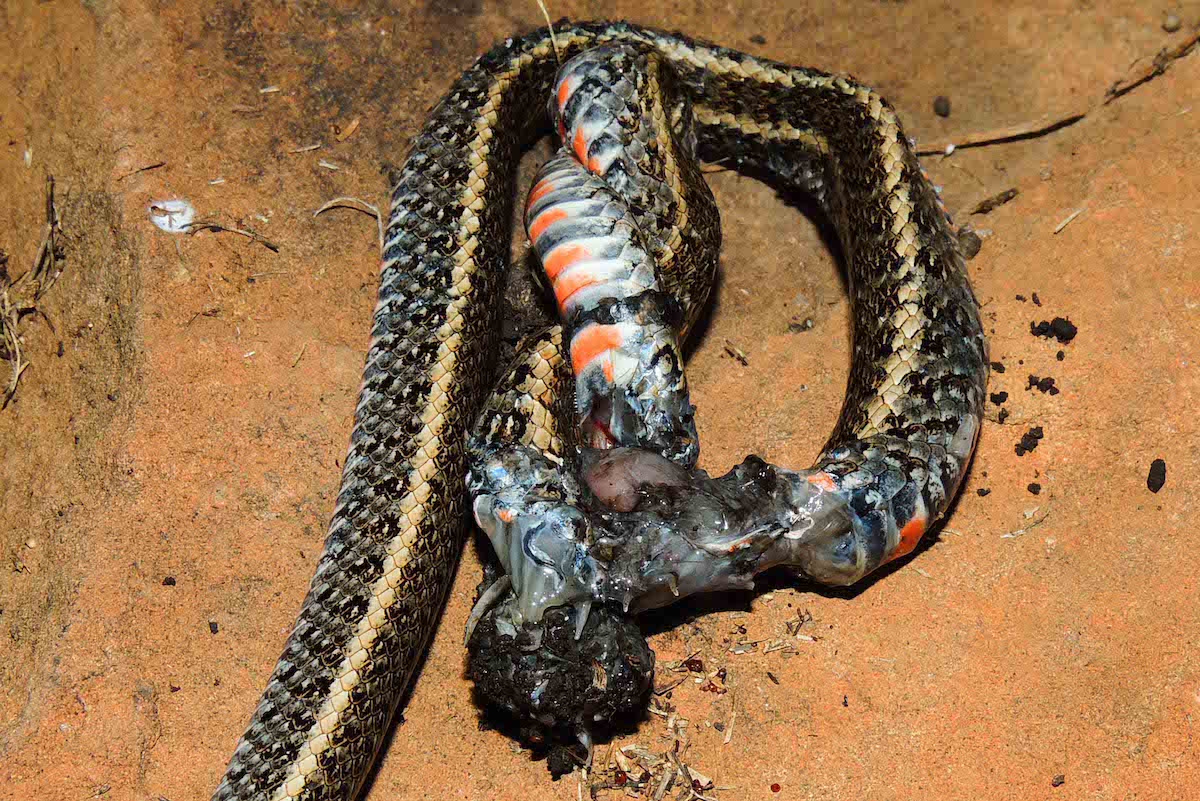Wild Tarantula Eats a Foot-Long Snake in a First

When scientists in southern Brazil turned over a rock while looking for tarantulas, they came across something they never expected: a spider eating a snake.
The tarantula, called Grammostola quirogai, was chowing down on the body of an Almaden ground snake (Erythrolamprus almadensis). It's the first time a tarantula has ever been seen preying on a snake in the wild.
"Predation of such a large snake in relation to the size of the spider was extremely surprising to us," said Leandro Malta Borges, a graduate student in biology at the Federal University of Santa Maria in Brazil.
Borges and his colleagues reported their shocking discovery Dec. 3 in the journal Herpetology Notes. The researchers were studying tarantulas in the Serra do Caverá, a rocky, grassy region in the far south of Brazil. Under a rock, they discovered a 15-inch (39 centimeters) snake being eaten by an adult female G. quirogai. This species was formally described last year, Borges said, and previously had been known to exist only in Uruguay. [See Gory Photos of the Tarantula Preying on the Snake]
Grammostola tarantulas are hand-size arachnids, and one of G. quirogai's close relatives, the Chilean rose tarantula (Grammostola rosea) is a popular aquarium pet. Other Grammostola tarantulas have been induced to eat snakes in captivity, Borges and his colleagues wrote, but the behavior hadn't been seen in the wild. Another species of spider, the Goliath birdeater (Theraphosa blondi) has fed on a viper, but the encounter between the two species was engineered by researchers.
"There are other records of spiders preying on snakes, such as the famous black widow, which has a strong toxin and, besides, rely on the web for capturing," Borges said. But tarantulas don't spin webs to trap prey.
Most likely, Borges said, the unfortunate snake simply slithered by the tarantula's rock or tried to use it as a den. The tarantula probably attacked — spiders of this species can have fangs nearly 0.8 inches (2 cm) long — and subdued the reptile. Tarantulas do have venom, but there are no studies of G. quirogai venom, Borges said. Therefore, it's unclear whether its venom would be strong enough to affect a snake. Typically, these tarantulas prey on other spiders and insects or smaller reptiles, amphibians, birds or even mammals.
Get the world’s most fascinating discoveries delivered straight to your inbox.
Once the snake was dead, the spider settled in for a feast. Spiders digest their prey by liquefying the insides of the victim's body and then slurping up the juices, which is what the tarantula was in the process of doing when it was found. When the researchers found the pair, the snake's front and middle sections were a gooey mess.
Original article on Live Science.

Stephanie Pappas is a contributing writer for Live Science, covering topics ranging from geoscience to archaeology to the human brain and behavior. She was previously a senior writer for Live Science but is now a freelancer based in Denver, Colorado, and regularly contributes to Scientific American and The Monitor, the monthly magazine of the American Psychological Association. Stephanie received a bachelor's degree in psychology from the University of South Carolina and a graduate certificate in science communication from the University of California, Santa Cruz.



